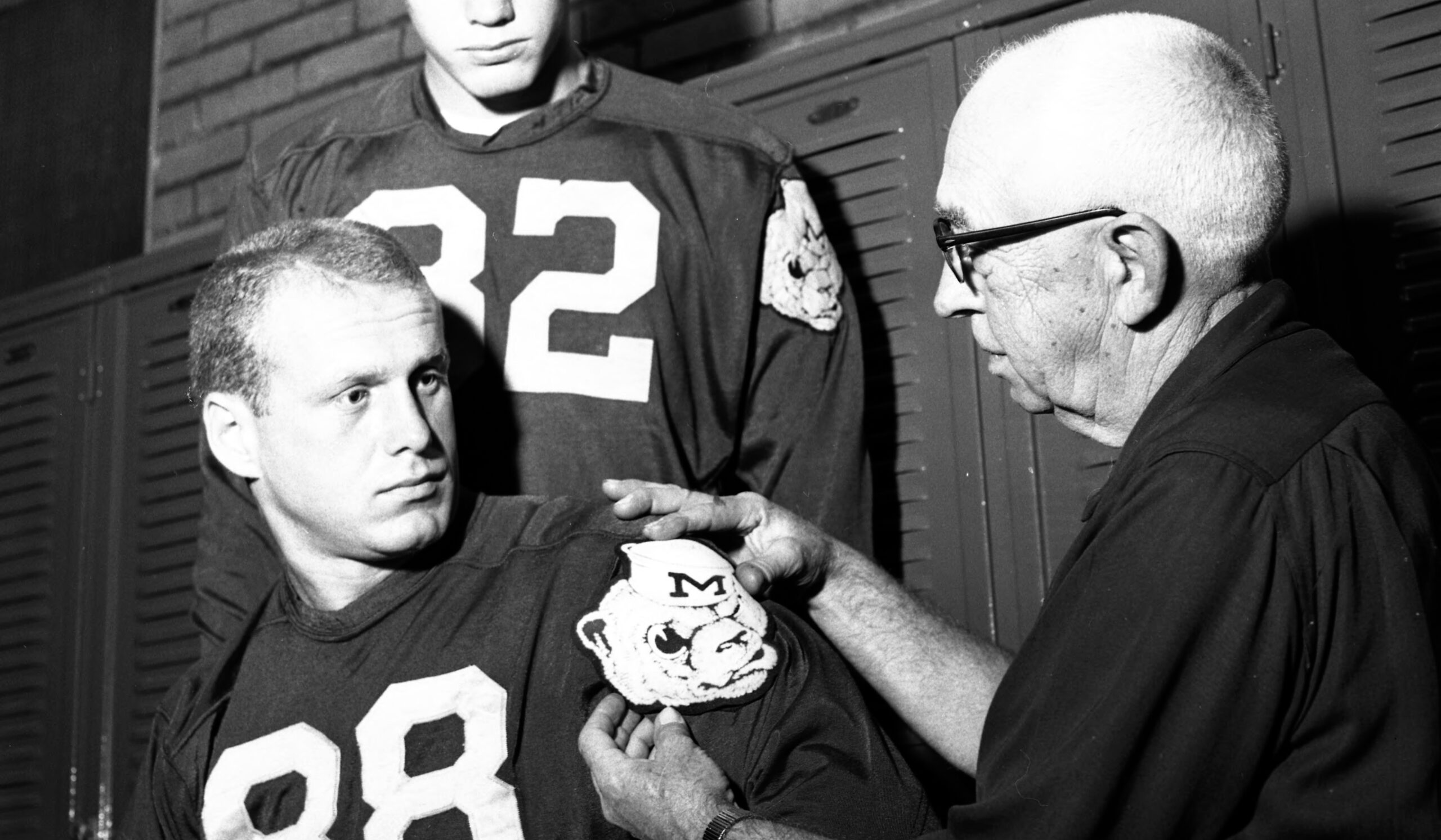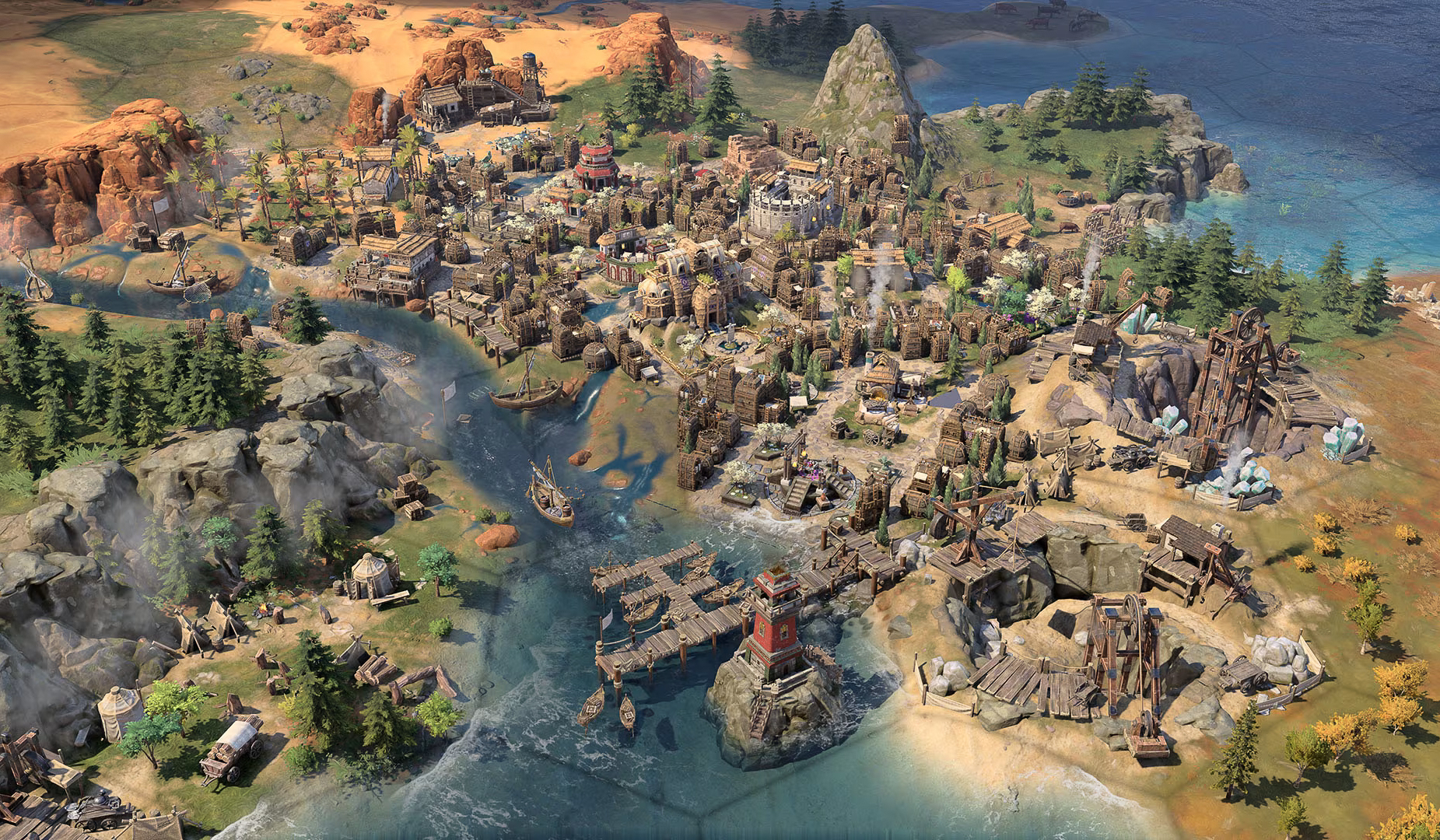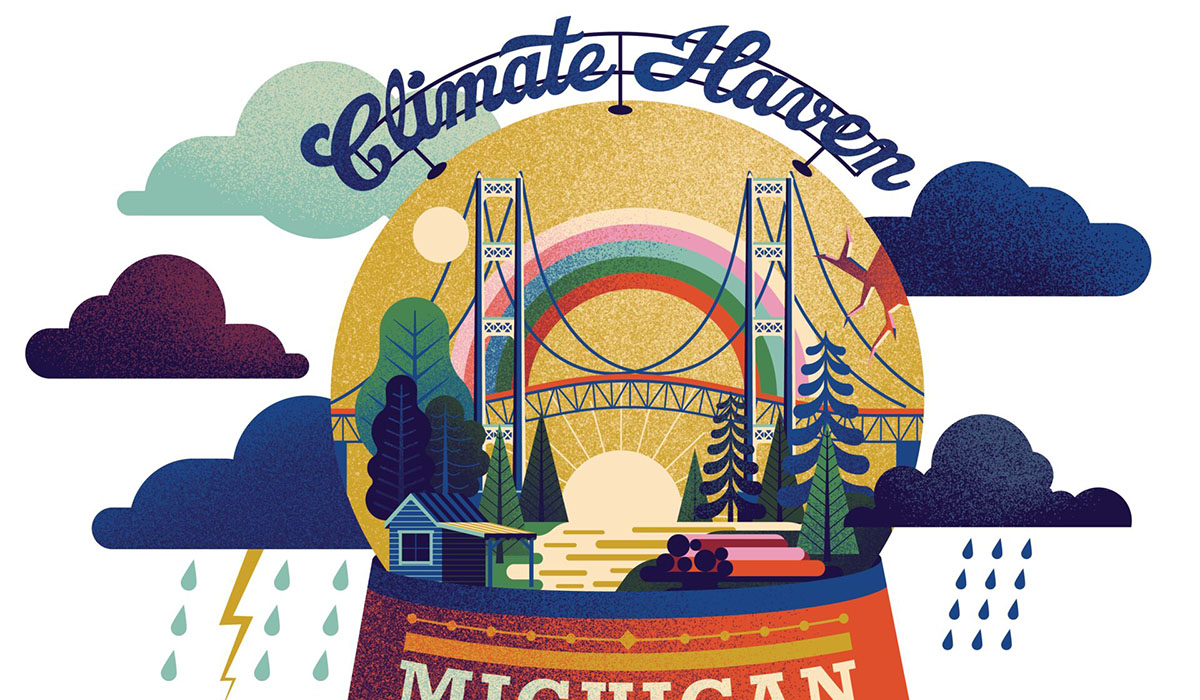When the Michigan Wolverines football team brought the College Football National Championship home this past January, a rapturous cheer erupted throughout the stadium as the beloved school mascot commenced his most dazzling celebratory tumble routine yet…
Well, maybe in another timeline. As things stand, U-M has no equivalent to Michigan State’s Sparty, the live longhorn Bevo at the University of Texas at Austin, or any of the dozens of similar characters. U-M likely never will. After more than two centuries, the idea of an official mascot has not stuck. Despite that, U-M has a surprisingly deep history with the concept.
Living and Breathing

The wolverine itself has long served as the symbol of the University. As early as the 1860s, U-M students and alumni were referring to themselves as “Wolverines.” The exact reasoning for this adoption is not definitively known and theories range from Michigan’s pre-statehood fur trade to the 19th-century Toledo War. But, undoubtedly, the wolverine’s reputation for ferocity and tenacity was what made it appealing as a symbol.
A mascot hadn’t been established by 1923 when head coach Fielding Yost, reportedly inspired by the University of Wisconsin’s practice of bringing a live badger to games, sought live wolverines for the Michigan sidelines. By the time of Michigan Stadium’s dedication in 1927, Yost had his animals, Bennie and Biff, paraded within a cage at games. Due to safety concerns and at least one escape incident, Wisconsin would transition to the human-in-costume route with Buckingham Ulysses “Bucky” Badger in the late 1940s. Due to similar concerns, Bennie and Biff’s tenure lasted only one year.
One more attempt at a live wolverine mascot came in 1939 when Chevrolet Motor Co. gifted one to the athletic department. Treppy, short for “Intrepidas,” only made one game appearance, owing to stress on Treppy and objections from museum experts. He retired to the campus zoo.
The ‘Wolverbear’
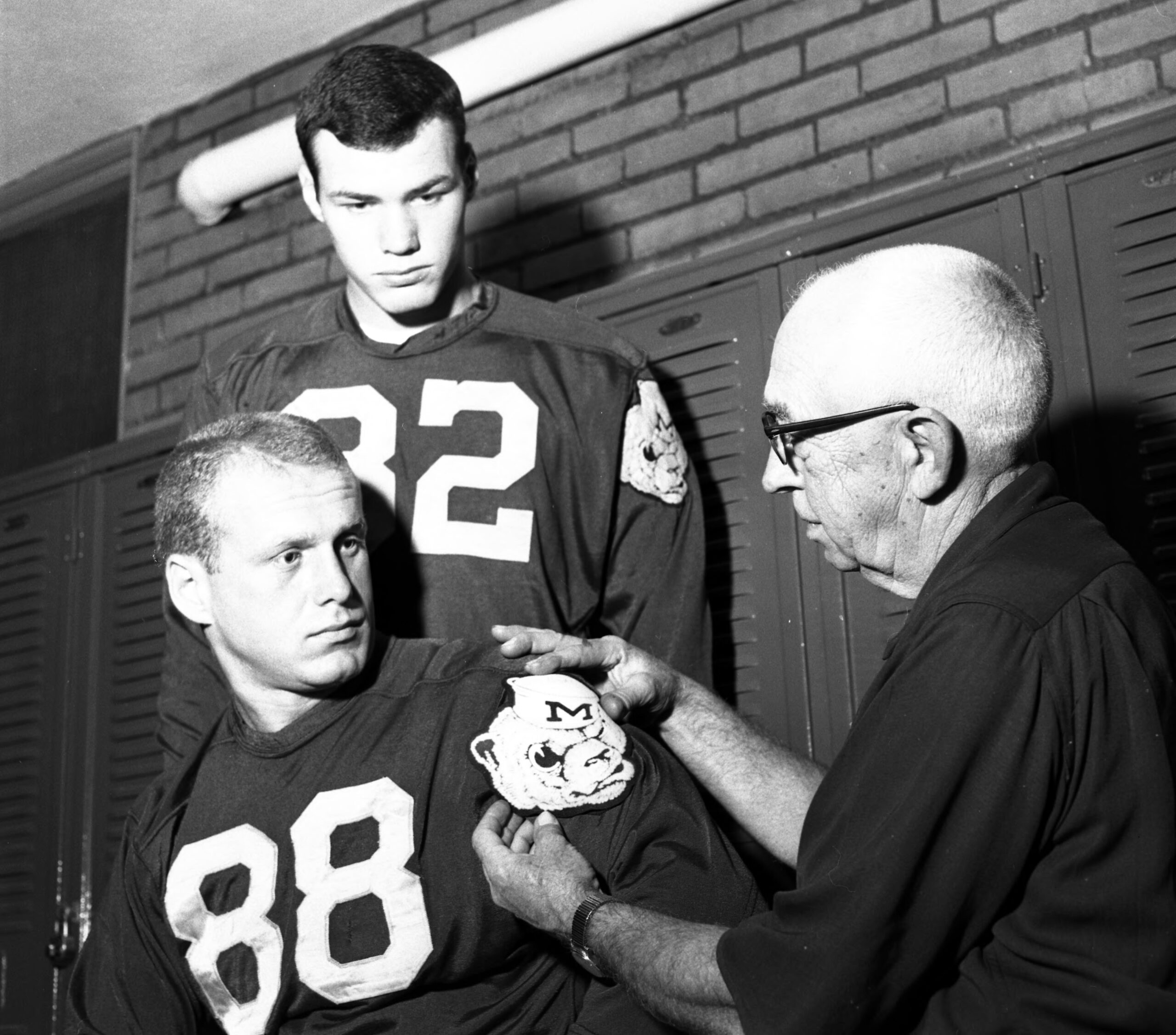
Though the 1962 season would end with a 2-7 record, a figurative bright spot was the unranked Wolverines’ victory over the 10th-ranked Army Cadets on Oct. 6. Symbolic of that win could be the literal bright spot added to some of the uniforms: a scowling cartoon wolverine (or “wolverbear,” more accurately to some) sporting a sailor hat.
The logo had come into use sometime in the 1950s, designed alongside multitudes of other collegiate icons by artist Arthur Evans. But the idea of a jersey patch came from assistant coach Robert Hollway, ’50, MA’51, patterned after a similar practice on the Army side. Like Bennie and Biff, the wolverbear’s tenure on uniforms was short-lived, with the game versus Army seemingly being its only official appearance in the era. Though the wolverbear has appeared on U-M merchandise since (the University was granted trademark ownership of the design in 2016), its use as an icon never seemed to gel enough to even grant it a name.
The Willy Saga
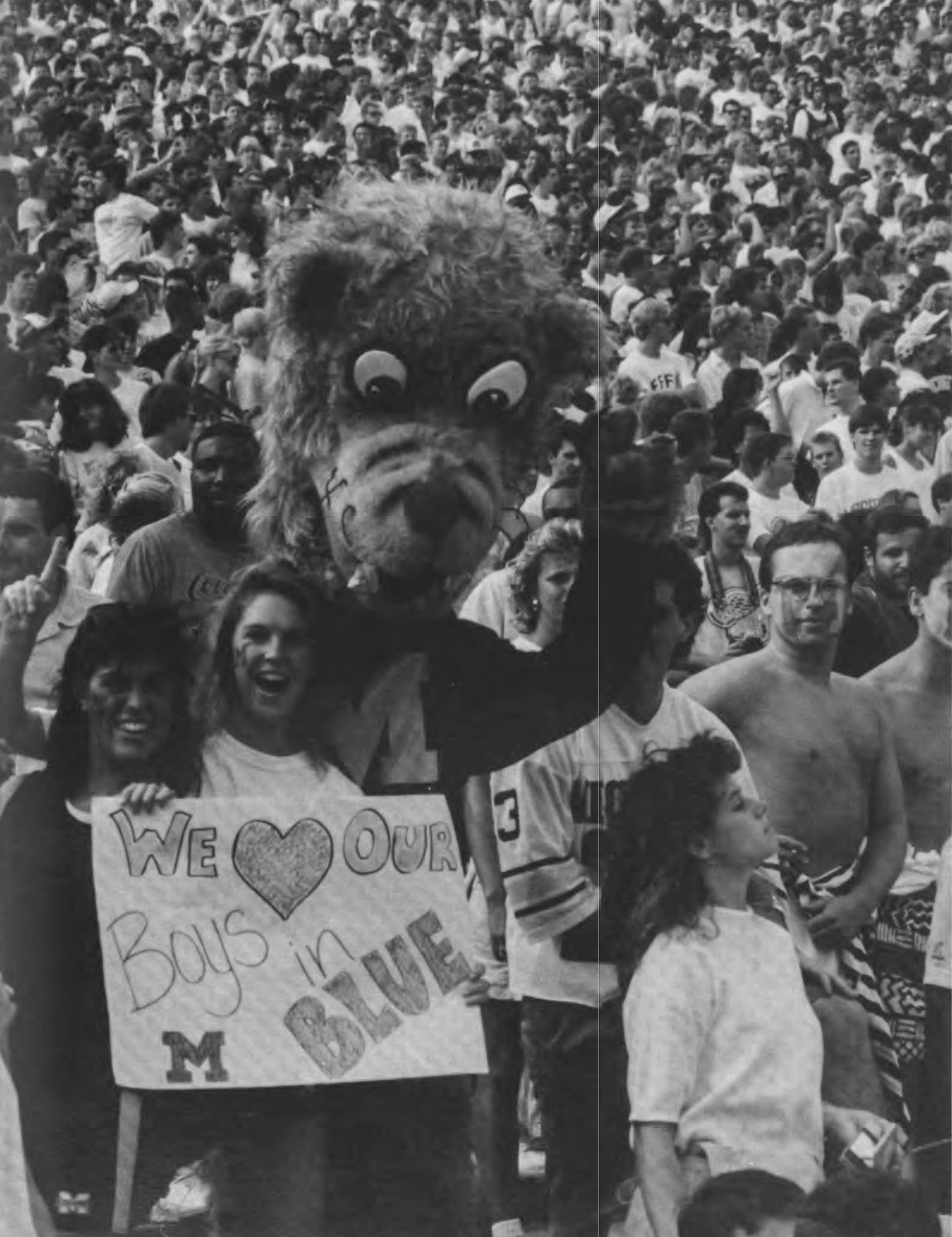
In the fall of 1987, a furry phenomenon stepped into the Maize-and-Blue zeitgeist in the form of Willy the Wolverine: an anthropomorphic critter with a friendly, proud demeanor and an M-emblazoned sweater. Created by then-students Adam Blumenkranz, ’90, MBA’92, Dave Kaufman, ’96 and Eric Lefkofsky, ’91, JD’93, after visiting other schools in search of inspiration for their clothing store, the group launched a grassroots campaign to elevate the character’s status. No longer would Willy just be the namesake of their store, but hopefully, with enough support, he would become the official mascot for athletics and the school. As merchandise and apparel were pushed out, a homemade suit allowed Willy to make real-life appearances around Ann Arbor and at games. Many Wolverines were delighted — Willy served as grand marshal of the 1989 homecoming parade, in fact — but many others were put off. Unfortunately for supporters, the anti-Willy side included U-M’s higher-ups, who barred him from the Big House early in the 1989 football season, arguing the seven-foot-tall costume obstructed the views of attendees.
An in-person, in-costume appearance at a November 1989 regents meeting and continued attempts to drum up support proved ineffective in changing the University’s mind or creating a movement. Willy’s saga concluded over the summer of 1992 when the University issued a cease and desist to force Big M Enterprises to stop using the mascot and other U-M trademarks.
Gregory Lucas-Myers, ’10, is the senior associate editor of Michigan Alum.

